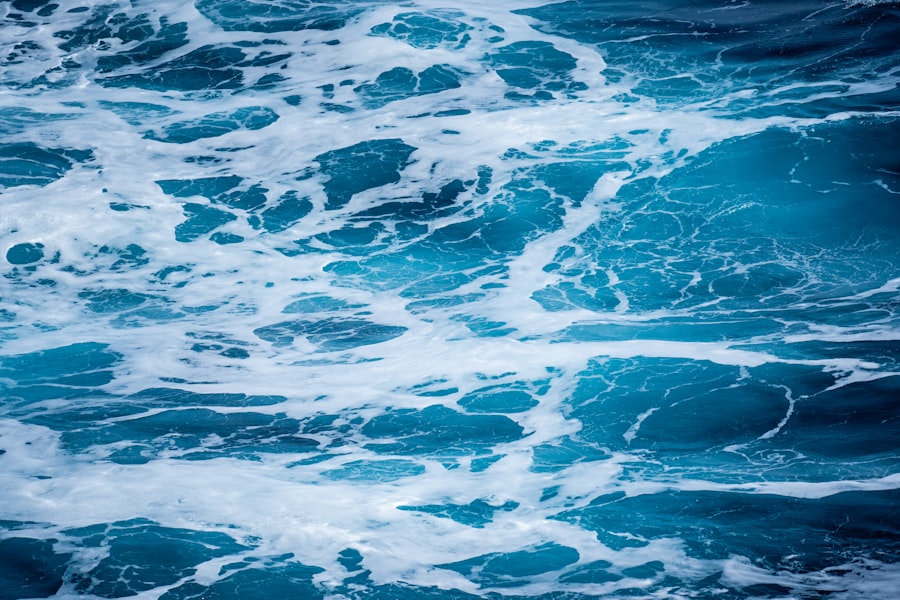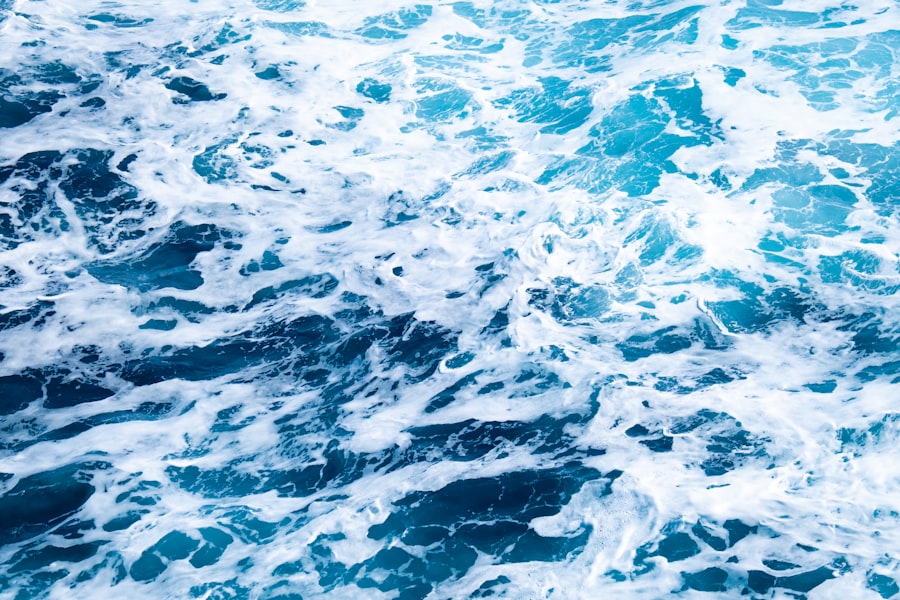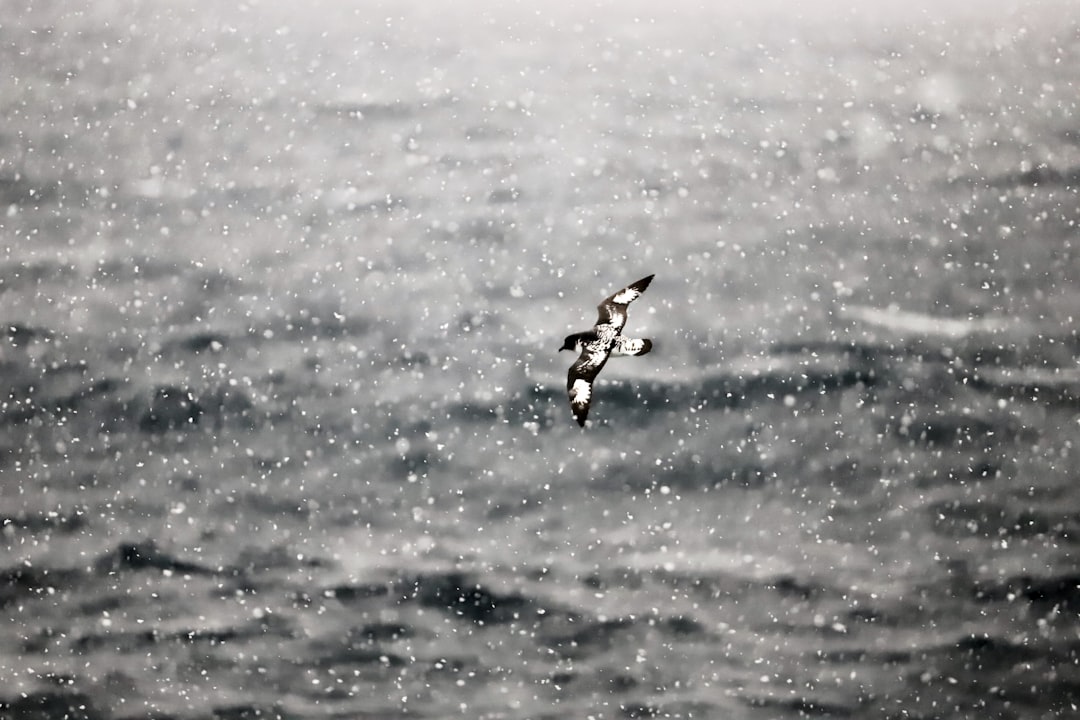The Drake Passage, a body of water that separates South America from Antarctica, is renowned for its tumultuous seas and unpredictable weather. Stretching approximately 600 miles, this passage is often considered one of the most challenging maritime routes in the world. Named after the English explorer Sir Francis Drake, who navigated these waters in the late 16th century, the Drake Passage serves as a vital conduit for ocean currents and marine life.
Its unique geographical position allows for a rich exchange of water between the Atlantic and Pacific Oceans, contributing to its dynamic ecosystem. Navigating the Drake Passage is not merely a logistical challenge; it is an adventure that many travelers seek to experience firsthand. The passage is characterized by its strong winds and high waves, which can create a rollercoaster-like experience for those aboard vessels traversing its waters.
Despite its reputation for rough seas, the Drake Passage also offers breathtaking views of the surrounding landscapes, including the rugged coastlines of South America and the icy expanses of Antarctica. For many, crossing this iconic passage is a rite of passage that marks the beginning of an unforgettable journey into one of the last great wildernesses on Earth.
Key Takeaways
- The Drake Passage is a body of water between South America’s Cape Horn and the South Shetland Islands of Antarctica, known for its rough seas and challenging sailing conditions.
- When preparing for a journey through the Drake Passage, it is important to pack warm clothing, seasickness medication, and essential travel documents.
- Safety measures on board include mandatory safety drills, life jackets, and experienced crew members trained in emergency procedures.
- Weather and sea conditions in the Drake Passage can be unpredictable, with potential for rough seas and strong winds, requiring a sturdy vessel and experienced crew.
- Wildlife spotting opportunities in the Drake Passage include sightings of whales, seals, and various seabird species, making it a prime location for nature enthusiasts and photographers.
Preparing for the Journey
Preparation for a journey across the Drake Passage requires careful planning and consideration. Travelers must ensure they have the appropriate gear to withstand the often harsh conditions encountered at sea. Layering clothing is essential, as temperatures can fluctuate dramatically.
Waterproof jackets, thermal layers, and sturdy footwear are recommended to keep passengers comfortable and dry during their voyage. Additionally, packing essentials such as sunscreen, sunglasses, and seasickness remedies can significantly enhance the overall experience. Beyond physical preparations, mental readiness is equally important.
The Drake Passage can be unpredictable, and travelers should be prepared for potential rough seas. Familiarizing oneself with the ship’s layout and safety protocols can help ease anxiety and foster a sense of security. Engaging with fellow passengers and crew members can also create a sense of camaraderie, transforming any apprehension into excitement as they embark on this remarkable journey together.
Safety Measures on Board

Safety is paramount when navigating the Drake Passage, and modern vessels are equipped with a range of safety measures to ensure passenger well-being. Before departure, crew members conduct thorough safety briefings, outlining emergency procedures and protocols. Passengers are encouraged to familiarize themselves with life jacket locations, emergency exits, and muster stations.
This proactive approach instills confidence in travelers as they prepare to face the challenges of the open sea. In addition to safety briefings, ships traversing the Drake Passage are equipped with advanced navigation systems and communication technology. These tools allow crew members to monitor weather conditions and adjust course as necessary to avoid particularly treacherous areas.
Lifeboats and life rafts are readily available, ensuring that passengers have access to safe evacuation methods in case of an emergency. The combination of thorough training and state-of-the-art equipment creates a secure environment for all aboard.
Weather and Sea Conditions
| Location | Temperature (°C) | Wind Speed (km/h) | Humidity (%) | Sea Conditions |
|---|---|---|---|---|
| Beach A | 25 | 15 | 70 | Calms |
| Beach B | 22 | 20 | 75 | Light Chop |
| Beach C | 28 | 10 | 65 | Smooth |
The weather in the Drake Passage is notoriously unpredictable, with conditions that can change rapidly within a matter of hours. Travelers should be prepared for a range of weather scenarios, from calm seas to fierce storms. The passage is known for its strong winds, which can reach speeds of up to 60 knots, creating challenging waves that can rise to heights of 30 feet or more.
Understanding these conditions is crucial for anyone planning to cross this formidable stretch of water. Monitoring weather forecasts before and during the journey can provide valuable insights into what to expect. Many vessels have onboard meteorologists who track conditions in real-time, allowing for informed decisions regarding navigation and safety.
Passengers should remain flexible in their plans, as itineraries may need to be adjusted based on prevailing weather conditions. Embracing the unpredictability of the Drake Passage can lead to unexpected adventures and memorable experiences.
Wildlife Spotting Opportunities
One of the most alluring aspects of traveling through the Drake Passage is the opportunity to encounter diverse wildlife. The waters are teeming with marine life, including various species of whales, seals, and seabirds. Passengers may be fortunate enough to spot humpback whales breaching or orcas swimming gracefully alongside the ship.
The sighting of these majestic creatures often leaves travelers in awe, creating lasting memories that enhance their journey. Birdwatchers will also find plenty to marvel at during their crossing.
These birds are not only fascinating to observe but also play a crucial role in the marine ecosystem. Many vessels offer guided wildlife spotting sessions led by knowledgeable naturalists who share insights about the animals encountered along the way, enriching passengers’ understanding of this unique environment.
Activities and Entertainment on GMA

Onboard activities during a journey across the Drake Passage are designed to keep passengers engaged and entertained throughout their voyage. Many vessels feature a range of amenities, including lounges, observation decks, and libraries stocked with books about polar exploration and marine life. Passengers can enjoy leisurely afternoons watching the waves roll by or participating in organized games and trivia contests that foster camaraderie among travelers.
In addition to recreational activities, many ships offer educational programs that delve into topics related to Antarctica’s geography, history, and ecology. Guest speakers may include scientists, historians, or adventurers who share their experiences and knowledge with passengers. These lectures provide valuable context for the journey ahead and inspire travelers to appreciate the significance of their expedition into one of Earth’s most remote regions.
Dining and Cuisine Options
Dining aboard vessels traversing the Drake Passage is an experience in itself, with many ships offering diverse culinary options that cater to various tastes and dietary preferences. Passengers can expect meals prepared by skilled chefs who emphasize fresh ingredients and local flavors. From hearty breakfasts to elegant dinners, dining becomes a highlight of each day spent at sea.
Many vessels also provide themed dining experiences that reflect the cultures of the regions being explored. For instance, travelers may enjoy a traditional Argentine barbecue or sample dishes inspired by Antarctic explorers’ diets from centuries past. These culinary adventures not only satisfy hunger but also create an opportunity for passengers to connect with one another over shared meals while discussing their experiences and aspirations for their journey ahead.
Health and Wellness Facilities
Health and wellness facilities aboard ships navigating the Drake Passage are designed to ensure passengers feel their best throughout their journey. Many vessels feature fitness centers equipped with exercise machines and free weights, allowing travelers to maintain their fitness routines even while at sea. Yoga classes may also be offered on deck, providing a serene environment for relaxation amidst the rhythmic motion of the waves.
In addition to physical wellness options, many ships prioritize mental well-being by offering spa services such as massages and facials. These treatments provide an opportunity for passengers to unwind after long days of exploration or wildlife spotting. Access to health professionals onboard ensures that any medical concerns can be addressed promptly, allowing travelers to focus on enjoying their adventure without worry.
Expert Guides and Lectures
Expert guides play a crucial role in enhancing the experience of those crossing the Drake Passage. Many vessels employ knowledgeable naturalists who accompany passengers on their journey, providing insights into the unique ecosystems they encounter along the way. These guides often lead excursions on land during stops at various Antarctic locations, sharing their expertise on local flora and fauna while ensuring that travelers engage responsibly with this fragile environment.
Lectures conducted by experts in fields such as marine biology, glaciology, or climate science further enrich passengers’ understanding of Antarctica’s significance in global ecosystems. These presentations often include stunning visuals that capture the beauty and complexity of this remote region. By engaging with experts throughout their journey, travelers gain a deeper appreciation for not only what they see but also why it matters in a broader context.
Photography and Videography Tips
Capturing memories during a journey across the Drake Passage is essential for many travelers, making photography tips invaluable for those eager to document their experiences. The unique lighting conditions found in polar regions can create stunning visuals; therefore, understanding how to adjust camera settings accordingly is crucial. Travelers are encouraged to experiment with different angles and perspectives while keeping an eye out for wildlife moments that may unfold unexpectedly.
Additionally, many vessels offer photography workshops led by professional photographers who share techniques for capturing breathtaking landscapes and wildlife shots. These sessions provide practical advice on composition, lighting, and equipment usage tailored specifically for polar environments. By honing their skills during these workshops, passengers can return home with stunning images that encapsulate their adventure across one of Earth’s most remarkable passages.
Making the Most of the Experience
To truly make the most of a journey across the Drake Passage, travelers should embrace every moment with an open mind and heart. Engaging with fellow passengers fosters connections that can lead to lifelong friendships formed amidst shared experiences in this extraordinary setting. Participating in onboard activities—whether it be attending lectures or joining wildlife spotting excursions—can enhance one’s appreciation for both nature’s beauty and human resilience.
Moreover, maintaining flexibility in plans allows travelers to adapt to changing conditions while remaining open to unexpected adventures that may arise during their voyage. Whether it’s witnessing a pod of whales or enjoying an impromptu gathering under starlit skies on deck, these moments often become cherished highlights long after returning home. By immersing themselves fully in this unique experience across the Drake Passage, travelers create lasting memories that will inspire future explorations into uncharted territories around our planet.
In a recent discussion about the cultural impact of Drake’s music, an article on MyGeoQuest delves into the geographical influences that have shaped his sound and global appeal. The piece explores how Drake’s Toronto roots and diverse background contribute to his unique style, resonating with audiences worldwide. For a deeper understanding of these influences, you can read the full article on MyGeoQuest by following this link. This article provides an insightful analysis of how geography and culture intersect in the music industry, using Drake as a prime example.
WATCH NOW! Drake Passage: Earth’s Deadliest Waters Revealed
FAQs
What is the Drake Passage?
The Drake Passage is the body of water between the southern tip of South America and the northern tip of the Antarctic Peninsula. It connects the Atlantic and Pacific Oceans.
Why is the Drake Passage significant?
The Drake Passage is known for its rough seas and strong winds, making it one of the most challenging and unpredictable bodies of water to navigate. It is also a key location for studying oceanic and atmospheric processes due to its unique position and characteristics.
What is the weather like in the Drake Passage?
The weather in the Drake Passage is characterized by strong winds, high waves, and rapidly changing conditions. It is notorious for its rough seas and stormy weather, which can make crossing the passage a daunting experience for sailors and passengers alike.
What wildlife can be found in the Drake Passage?
The Drake Passage is home to a diverse range of wildlife, including various species of seabirds, seals, and whales. It is a popular destination for wildlife enthusiasts and researchers due to the abundance of marine life in the area.
How is the Drake Passage relevant to global climate and oceanography?
The Drake Passage plays a crucial role in global ocean circulation and climate patterns. It is a key location for studying the exchange of water, heat, and nutrients between the Atlantic, Pacific, and Southern Oceans, which has significant implications for global climate and oceanography.
